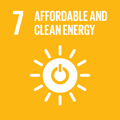- Docente: Michele Celli
- Credits: 3
- Language: Italian
- Teaching Mode: Traditional lectures
- Campus: Bologna
-
Corso:
Second cycle degree programme (LM) in
Energy Engineering (cod. 5978)
Also valid for First cycle degree programme (L) in Energy Engineering (cod. 0924)
-
from Feb 20, 2025 to Jun 12, 2025
Learning outcomes
Students will learn to solve numerically basic heat and mass transfer problems.
Course contents
Students will acquire a basic knowledge the balance equations governing heat and mass transfer and of the main numerical methods employed to solve the balance equations. The procedure to obtain dimensionless balance equations will be presented. An introduction to the main numerical methods employed for solving heat and mass transfer problems will be presented.
Student will solve numerically, by using personal computers of the computer laboratory, the following type of problems: one/two dimensional stationary/transient conduction, forced convection in ducts and thermal entrance regions.
The dimensionless balance equations will be solved by employing MATLAB (© MathWorks) first by means of the graphical interface PdeTool and then by writing a simple code.
MATLAB licences are free for the students of Università di Bologna.
Readings/Bibliography
Lecture notes.
Arpaci V.S. Larsen P.S. CONVECTION HEAT TRANSFER PRENTICE-HALL INC. ENGLEWOOD CLIFFS 1984.
Teaching methods
The students are invited, but it is not mandatory, to bring their own device (BYOD - Bring Your Own Device) since the lecture hall does not provide the students with personal computers.
Assessment methods
The exam consists of solving numerically a basic heat and mass transfer problem, similar to those presented during the classes.
The student will pass the exam if he/she proves to be able of
- obtaining the dimensionless form of the local balance equation, of the auxiliary conditions, and of the geometry relative to the presented problem
- solving numerically the problem in its dimensionless form by means of the graphical interface PdeTool and then by writing a simple code
Teaching tools
The teacher emplyes the software Mathematica as virtual blackboard and the software Matlab to solve the heat transfer problem proposed.
MATLAB may be downloaded at the page:
http://www.unibo.it/en/services-and-opportunities/studying-and-beyond/discounts-for-computer-tablet-and-software-1/matlab
The course joins the University's didactic experimentation projectLinks to further information
Office hours
See the website of Michele Celli
SDGs




This teaching activity contributes to the achievement of the Sustainable Development Goals of the UN 2030 Agenda.
